The Fujifilm X-T1 is Fuji’s newest and most mature camera to date. It’s the first mirrorless Fuji camera that I think is a viable replacement for a DSLR.
UPDATE, May, 2015: I’ve now published a review of the X-T1 for Astrophotography. Check it out for a bunch of my favorite night photos with the camera.
I’ve been a Fujifilm X-Series user ever since the release of the X-E1. While I really enjoyed my 6 months with the X-E1, there were a number of things that held it back from being amazing, all of which I covered in my Long Term Fujifilm X-E1 Review. While I was able to take some great photographs and even some very successful astrophotos with the X-E1, ultimately, I decided to sell off the X-E1. I stuck with my Canon EOS 6D as my primary photo maker with the hopes that Fujifilm would respond to the shortcomings that kept me from holding on to the X-E1. Nearly every single thing I regarded as a shortcoming on the X-E1 have been addressed with the newly released Fujifilm X-T1.
Some may ask why I would even consider comparing a compact system camera like the X-E1 or X-T1 to a full-frame DSLR like the Canon EOS 6D. For me, it’s a simple balance between the image quality available from full-frame lenses versus the convenience of a more compact system. Smaller size imposes physical constraints on the capabilities of a camera system, and this puts the Fuji X-Series at a distinct disadvantage to its larger full-frame competitors. But the Fujifilm X-T1, along with the fast growing line of fast, sharp X-Series lenses, offers much more than just being conveniently smaller than most full sized DSLRs. It directly competes with them in all aspects of performance, ergonomics, and image quality.
This review documents my observations of this latest offering in the X-Series lineup. I like to use my cameras for real photography, so that’s what I’ll present here alongside my critical take on my experiences with the X-T1. Look for a future post on my experiences shooting astrophotography with this camera. Let’s start with the unboxing and take a look at some of the things that I like most about the form factor of the X-T1.
Form and First Impressions
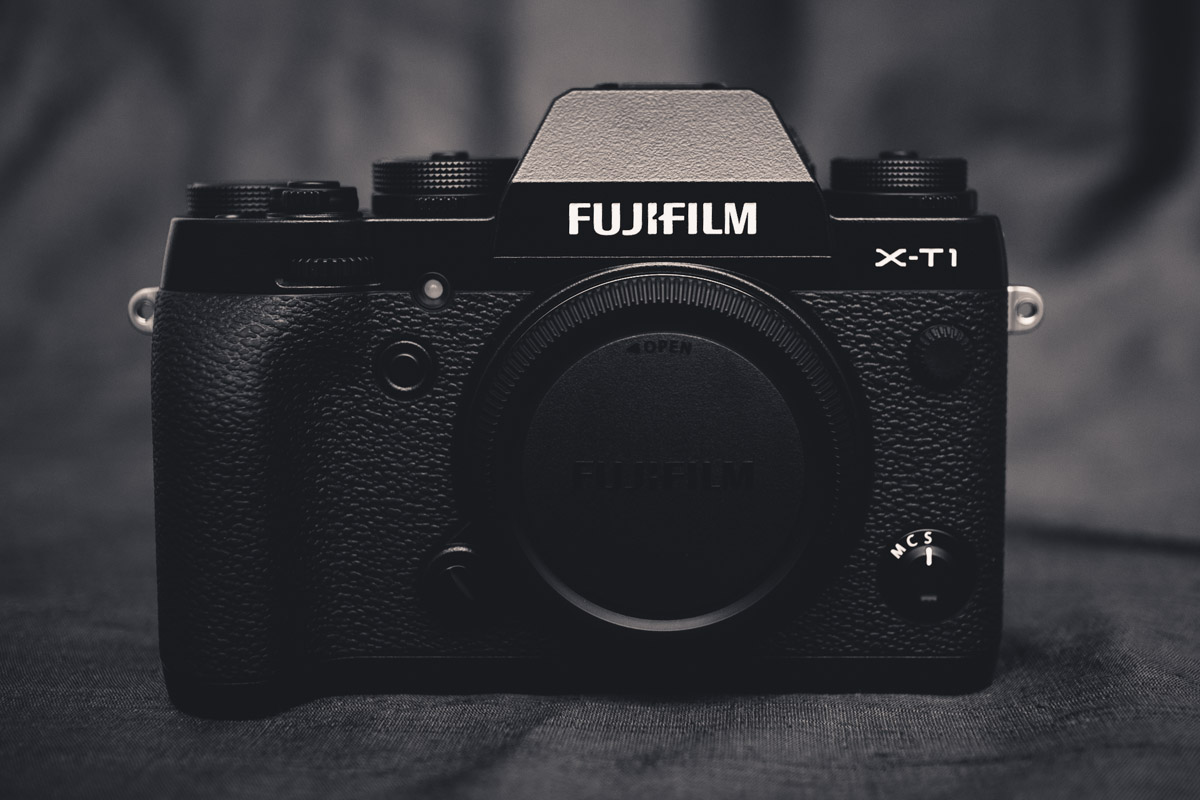
Its proportions make it look like a full size DSLR which makes it easy to forget that it’s about the same size as the X-E2. Note the addition of a new programmable function button near the grip underneath the AF assist light and a PC port for studio strobes just under the X-T1 logo. The AF mode selector (M/C/S Switch) is in the usual spot X-series owners will be familiar on the bottom corner of the camera, opposite the grip. The grip is more pronounced than the X-E1/X-E2 but not as large as a typical DSLR. For comparison purposes, let’s take a look at the X-T1 next to the EOS 6D to understand how small it really is:
The X-T1 is 330 grams lighter and 24mm thinner than the EOS 6D. The smaller X-Series system uses an APS-C sensor rather than a full frame sensor like the 6D and also has a significantly shorter focal flange distance as it uses no reflex mirror. This allows for everything in the system to be comparably smaller than the traditional DSLR design.
While not new to any other Fuji users, the dedicated shutter speed and exposure compensation dial are still some of my favorite qualities of the X-Series of cameras. The button lock on the shutter speed dial only engages when on “A” for automatic control of the shutter speed. Once taken off this setting, it rotates without need to disengage the lock. The exposure compensation dial is now stiffened up from the X-E1 so it’s less prone to accidentally bumping.
New to the X-T1 is the ISO dial which is a welcome addition for the photo purist. Now it’s possible to see every exposure setting without looking at a screen or having to press a button. It’s a subtle difference from most other digital cameras, but I have no hesitation saying that I much prefer a physical dial over a digital menu. There has been some criticism of the fact that the ISO dial has a lock button which prevents super fast changes.
In addition to the ISO dial, the frame shooting mode dial rests conveniently under it, where you can select options like bracketing, 8fps continuous mode (Continuous High: CH), and some of the other novelty functions like double exposure, panorama mode, and the so called “ADV.” or advanced mode which is actually a cheesy effects mode that contains things like “toy camera” effect and the “isolate color” effect. Not sure why Fuji bothered including such a mode on a camera targeted toward serious photographers but I guess it keeps things fun which photography should be.
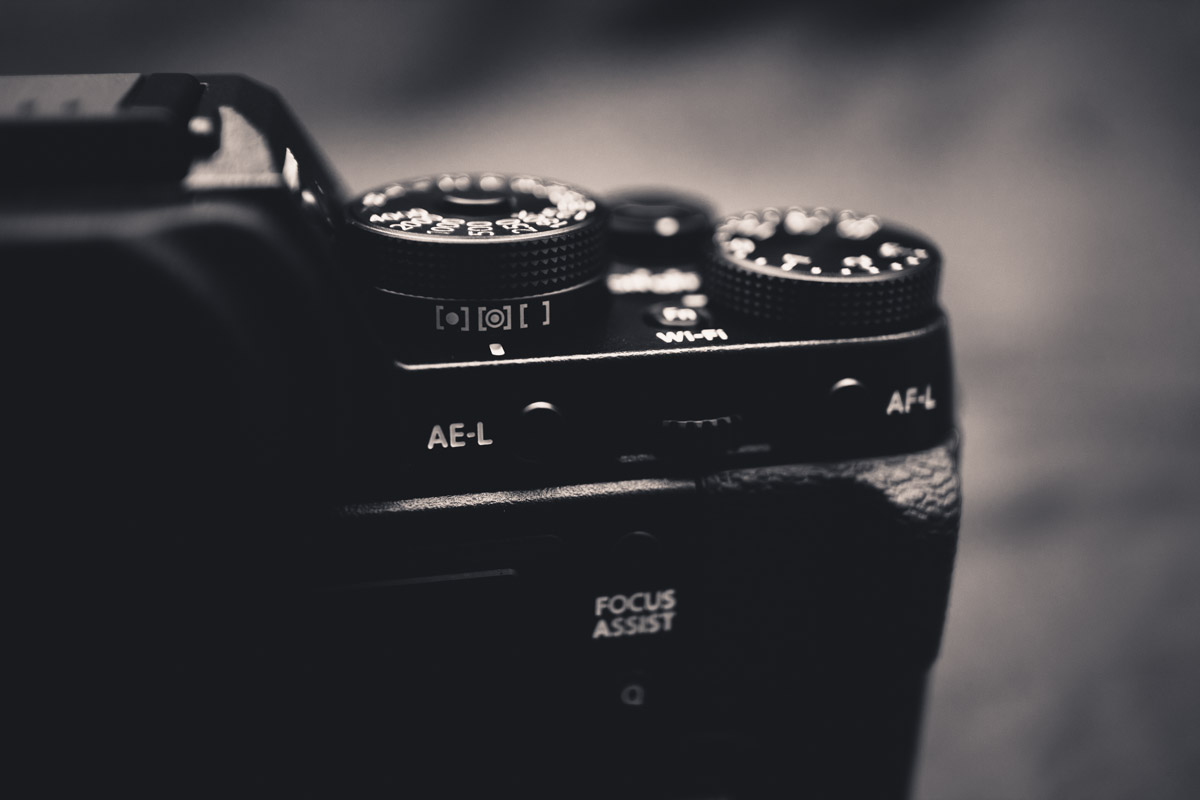 Unique also to the X-T1 is the metering mode select dial just under the shutter speed dial which makes is super fast to switch from matrix metering to spot or center-weighted. I’d also like to mention that the new location of the AE-L and AF-L buttons is significantly more ergonomically friendly over the X-E1 and X-E2 and the separation of the focus assist function from the rear dial is a welcome over the awkward push click dial on my old X-E1. With those new button placements and a more substantial rear grip, my right thumb couldn’t be happier. Another welcome change is that the AF-L button now also functions as a back button auto-focus, similar to the AF-ON buttons found on modern Canon cameras. This is my personal preferred method of acquiring focus and it’s implementation on the X-T1 is great.
Unique also to the X-T1 is the metering mode select dial just under the shutter speed dial which makes is super fast to switch from matrix metering to spot or center-weighted. I’d also like to mention that the new location of the AE-L and AF-L buttons is significantly more ergonomically friendly over the X-E1 and X-E2 and the separation of the focus assist function from the rear dial is a welcome over the awkward push click dial on my old X-E1. With those new button placements and a more substantial rear grip, my right thumb couldn’t be happier. Another welcome change is that the AF-L button now also functions as a back button auto-focus, similar to the AF-ON buttons found on modern Canon cameras. This is my personal preferred method of acquiring focus and it’s implementation on the X-T1 is great.
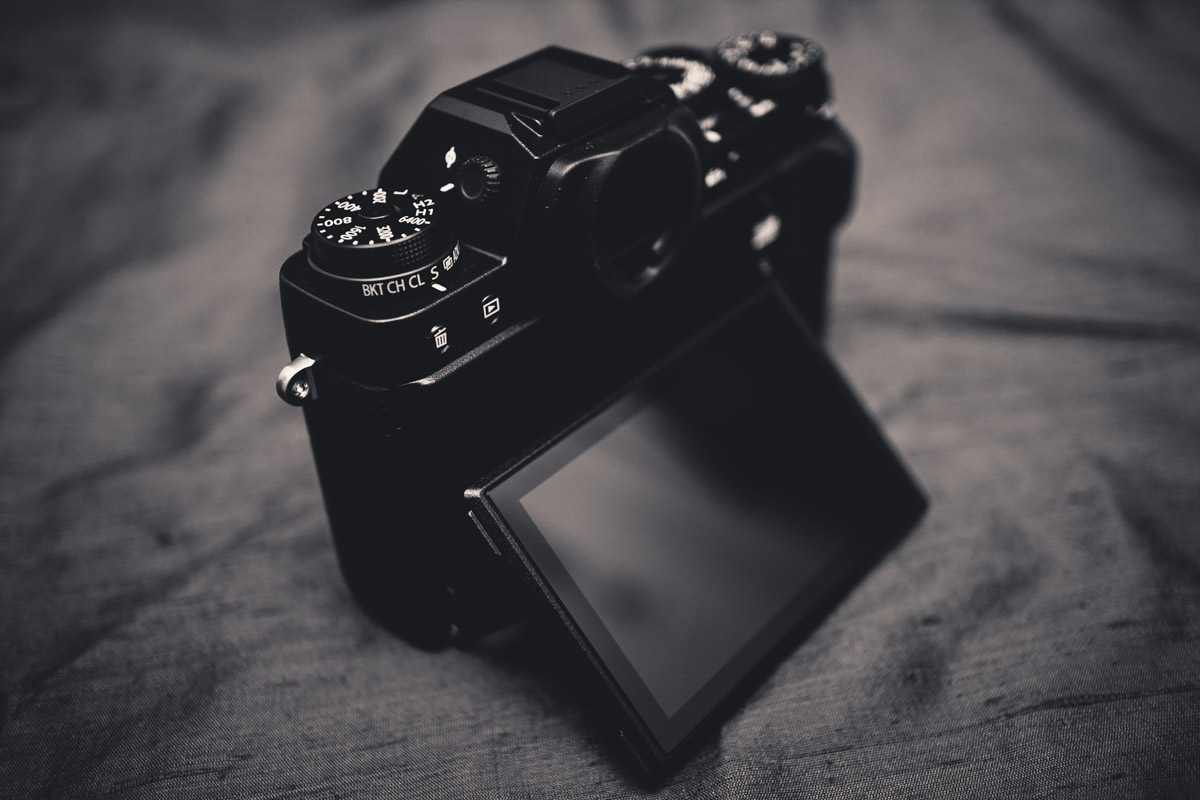 Finally! A tilting LCD screen! Some may associate this feature with small amateurish cameras but it’s a seriously helpful thing to have for low tripod shots. I couldn’t count how many times I have laid prone in the dirt to get the shot I wanted with all my previous cameras. It’s also worth noting that the LCD is no longer guarded by a soft plastic surface like on the X-E1 and now features a much more durable glass surface.
Finally! A tilting LCD screen! Some may associate this feature with small amateurish cameras but it’s a seriously helpful thing to have for low tripod shots. I couldn’t count how many times I have laid prone in the dirt to get the shot I wanted with all my previous cameras. It’s also worth noting that the LCD is no longer guarded by a soft plastic surface like on the X-E1 and now features a much more durable glass surface.
Thoughts on Form
I really like the form and function of almost everything on the X-T1. While there are a lot more dials than most contemporary designs, nothing is superfluous. Every major function that a photographer would want to change on the fly without needing to dig through menus has a dedicated dial or button. For other functions that you might like to access quickly, it’s also possible to assign custom functions to each of the 4 directional buttons, the new front function button (Fn1) and the Fn2/Wi-Fi button on the top plate.
In my initial testing of the camera’s interface, I’ve been on the lookout for anything I don’t like. Here’s what I’ve found so far.
Notable Quirks
- In Continuous Frame High Or Continuous Frame Low (CH and CL) modes, it’s nearly impossible to shoot only one frame at a time, it always shoots at least two. This means that if you wanted to keep the camera set to continuous “just in case you encounter a need for speed” you won’t be able to use a quick depress of the shutter to take only one shot at a time for “normal speed” situations, it will always take an extra frame. It’s like the camera is too eager to fill up the SD card. For comparison, on my 6D, particularly when shooting an event of some kind, I prefer to keep continuous frame mode enabled, even if I’m only snapping one photo at a time. Then, when an “action moment” happens, I can just hold the button longer to rattle off a quick sequence. This is not possible on the X-T1. Instead, it will alway be eager to rattle off at least two frames in CL or CH mode. The only way I’ve been able to get only one frame at a time is to fully depress and quickly release the shutter button before the camera has even achieved focus. Only then will the camera only take one frame. I’m not a sports photographer but if Fujifilm is touting this camera as a viable competitor to Canon or Nikon DSLRs for sports photogs, they should provide a firmware update to fix this behavior.
- The video record button cannot be assigned to a custom function. This has already been requested by pretty much every reviewer so far, I think largely because use of the X-T1 as a video camera is pretty low on the list of most Fuji shooters’ priorities. Furthermore, it’s easier than it should be to bump the record button while trying to change the exposure compensation. I would very much prefer to be able to assign this button to a more used function and move the option of video mode to underneath the ADV. shooting mode dial as a selectable option alongside “Toy Camera.”
- The ISO dial is locked on every setting and requires a press of the unlock button in order to change your ISO at all. This differs from the shutter speed dial which only locks when on the “A” position.
- The Electronic Viewfinder (EVF) will only show your custom display setting (under Screen Set-Up > Disp. Custom Setting). This means that you cannot quickly enable or disable the histogram, electronic level, or framing guidelines etc. in the EVF without needing to click through the menus to adjust what’s enabled or disabled. On the X-E1, the DISP/BACK button allowed you to do this. On the X-T1, when using the EVF, it only allows you to choose between “Normal” and “Full” sized views or “Dual” view mode when using manual focus. This is not a big deal, but sometimes I like to shoot through the viewfinder without any distracting information like the electronic level or histogram. It’s not possible to disable this quickly and instead requires a lot of menu button pressing. I would love it if Fuji could add similar display settings to the EVF as the LCD on the back of the camera with a future firmware update.
- Shooting photos at ISO 51200 is slow. At least on my 45MB/s Sandisk Extreme SDHC card, when you enable ISO 51200, the camera gives a brief processing screen right after the shutter closes. It only lasts about 1/4 second, but that means that it’s not possible to use this very high ISO speed at a very high frame rate. This behavior is only apparent on this particular extended setting. ISO 12800 and ISO 25600 shoot photos normally. Other users have reported the same behavior. Maybe my memory card is too slow but I’m not sure why it should be any different in speed than shooting at ISO 25600. I don’t yet have one of those fancy new UHS-II cards yet but as soon as I get one I’ll see how it behaves at the extended ISO 51200 setting. If you want to push your photos to ISO 51200, (or any of the extended ISOs) I recommend shooting at 6400 in RAW, underexpose with the exposure compensation dial as necessary and compensate in post processing later.
- Video mode only allows aperture and exposure compensation control. If you want to select your shutter speed or ISO, you’re out of luck. The camera will automatically set both the shutter speed and ISO based on your selected aperture and exposure compensation. You have a choice of 720p or 1080p and 30p or 60p frame rates in either resolution. If Fuji added full manual control and 24p to the video mode, it would actually be pretty nice. Manual focus peaking also isn’t available while recording video. I imagine these improvements are possible in a firmware update but I’m sure it’s pretty low on the list of priorities for most Fujifilm shooters. If you’re a hardcore video shooter, the X-T1 is not for you.
- Early copies of the X-T1 have a possible light leak through the mic/HDMI/USB port if the cover is unlatched. This problem was just discovered on March 5th by photographer on the fujix-forum and Fuji has not yet responded how it will respond to the problem for us early adopters. The problem presents itself only when the port cover is unlatched and a bright enough light source is cast on the mic, HDMI, or USB port. This becomes a problem especially for daytime long exposures with a neutral density filter where users will be inclined to use a remote trigger in bright, sunlit conditions. I’m sure Fuji will respond with a fix but we’ll need to wait and see what it is. I’ll report back when a true fix is issued. In the meantime, users are adding some gaffer’s tape around the ports if they need to use a remote trigger. This is not unlike the light leaking from the viewfinder of a DSLR during sunlit long exposures. Most DSLRs come with a rubber cap for the viewfinder when shooting in this situation. The problem is concerning because the X-T1’s leak isn’t expected by design and it raises questions about the camera’s weather sealing capability. It’s likely that this is a problem only on some of the cameras shipped early. (Edit: Fujifilm has responded with a free repair to affected X-T1 owners.)
- Continuous autofocus mode hunts while finding focus. This last quirk is a weird one because in practice it doesn’t affect performance as much as it would seem to. If you enable continuous autofocus and press the shutter halfway, the lens will hunt back and forth continuously and never stop moving, even when it’s “found” focus. This is really disconcerting when looking through the viewfinder and seeing your image constantly shift in and out of focus. It doesn’t affect results as much as you would expect in practice: once you take a photo it surprisingly is usually in focus, even if you put the focus/release priority to “release” in the menus. This behavior is not present on the other X-Series cameras, only the X-T1. It’s one of the things that seems most “off” on the camera and I imagine would severely disappoint some action shooters, even if the results tend to be fine. I hope Fujifilm releases a fix to prevent this continuous hunting behavior. My recommendation is to set the focus release priority on “focus” just to ensure that it only releases when it has “found” focus.
And I’ve found plenty of nice surprises about this camera too:
The Goods
- The Electronic Viewfinder (EVF) is amazing. Believe the hype. The view that the viewfinder provides is grand and the refresh rate is nice and smooth, even in low light. It makes the camera feel like a full frame SLR, but with the benefit of a true exposure preview and all the information you can feast your eyes on. The dual view focusing aids are great, particularly manual focus peaking, which you can now choose Red, White or Blue as the highlight color. Too bad you can pick all three colors at once (‘murica). At times, especially with the most of the optional display features like gridlines and the electronic level are disabled, you can forget that you’re looking at an electronic viewfinder and take it for an optical one. Finally, and most of you probably already know about it, but the EVF will rotate the text in the frame to match the camera orientation, why hasn’t this been done before? Now all we need is a firmware update to allow it to do the same with the LCD.
- It’s slightly quieter than the X-E1/X-E2. This is likely attributed to the beefier build quality of the body as I understand the shutter mechanism should be identical between all these cameras. It’s not X100s quiet (which is silent), but it’s definitely not a loud shutter. Here’s an audio clip of what the X-T1 shutter sounds like:
- It’s possible to turn off both the LCD and the viewfinder at the same time. In this mode (EVF ONLY + EYE SENSOR), the viewfinder only comes on when you raise the camera to your eye. This should be great for keeping the camera on continuously without killing your battery.
- The camera now remembers your “T” mode long exposure setting perpetually, even when you pull the battery. This wasn’t the case with the X-E1 which would reset as soon as the camera went into power saving or was turned off. I really like this for astrophotography because it means I can set it to my desired shutter speed and leave it that way for the remainder of the night.
- The grip is extremely comfortable. It’s not as substantial as a DSLR, but I have had no hesitation carrying the camera around all day with nothing but a wrist strap. The ergonomics are greatly amplified by the rear thumb protrusion on the back of the grip. It’s much more comfortable than the X-E1/X-E2 in my opinion and I don’t really see the need for the additional MHG-XT Grip.
Canon EOS 6D vs. Fujifilm X-T1 Size Comparison
Despite its small size, the X-T1 is very comfortable to hold. The grip is reassuring without being monstrously large like a full-size DSLR.
- The arrow buttons are less easy to press accidentally. Some reviewers have pointed out the more recessed buttons as a negative point but I love it. With the X-E1, I too often accidentally would press the up arrow and unintentionally enable macro mode. I think the X-T1 directional pad buttons are a welcome change over the all too easy to bump buttons on previous X-Series camera.
- The intervalometer works great and is super easy to set up. I shoot a lot of timelapse sequences. Once the X-T1 was announced with an intervalometer, it made the camera that much more attractive. I hate using an external intervalometer. I’ve had too many of them fail in the field (especially in the cold), run out of batteries, and just take forever to set up properly. The only reason I see for keeping my accessory intervalometer is for use with “Bulb” mode for exposures longer than 30 seconds. That actually leads me to another point, why don’t they implement a programmable bulb mode into a firmware upgrade? That would make an external intervalometer completely unnecessary. Furthermore, the option to disable both the LCD and the viewfinder, along with disabling image review will keep all the screens off while shooting a timelapse which should be great at conserving battery power. I imagine that when combined with the optional battery grip, it should be possible to make some very long time lapse sequences on the order of 6 or 7 hours long with ease. Here’s an example timelapse taken with the X-T1:
- Back button focusing and true auto focus lock (AF-L). I love being able to focus with a the AF-L button on the back of the camera. It’s my primary method of focusing on the Canon EOS 6D (AF-ON button) and it’s a welcome feature on the X-T1. This feature allow the photographer to separate their metering and focusing operations by first using the back button to focus and then pressing the shutter button halfway to meter. The AF-L button behavior functions a little bit different than some may expect. It’s not an autofocus stop button it instead is an autofocus start and lock button and it actually does function as a true autofocus lock. This means that it’s now possible to focus once with the AF-L button and then take multiple consecutive photos without having the camera refocus. This is a distinctly different behavior than the autofocus behavior when holding the shutter button half-pressed while shooting which will always re-acquire focus for each consecutive shot even if you keep it half depressed.
- Auto ISO is customizable and very useful. For most handheld shooting, I almost always base my decision to adjust ISO on how slow a shutter speed the meter chooses for my exposure. If it’s below about 1/125th, I’ll increase my ISO. The X-T1 allows me to do this automatically with auto ISO. You can customize what minimum shutter speed the camera must use and the available ISO Range. I set it to 1/125 with a target ISO of 200 and a maximum ISO of 6400. It would be nice if the shutter speed could be set as a function of focal length, but as is, it’s currently useful for my limited range of lenses (my longest lens is the XF 35mm f/1.4). My favorite method for exposure is to use aperture priority with auto ISO: I set my desired aperture (usually wide open at f/1.4 for low depth of field or stopped down to f/5.6 for maximum sharpness) and let both ISO and shutter speed to “A” automatic modes. If I’m shooting in a situation that requires faster shutter speeds like action or from a moving car (rare), I’ll switch to shutter priority by moving the aperture ring to the “A” automatic mode and then select the appropriate shutter speed (say 1/1000th when shooting from a moving car).
- Wi-Fi remote control works great. It’s better than the EOS 6D’s wi-fi. The refresh rate and responsiveness is faster than on the 6D and the wireless range seems to be good as well. One of the things I like most is that the camera exposure settings can be overridden with the app. So even though you may have manually set the shutter speed, you can force it to a new one without having to touch the camera. Remote control might seem like a gimmick to some people but it’s especially helpful when taking self-portraits or when I need to record a video lesson.
- It’s possible to directly select your focus point with the four way controller. Holding down any of the arrow buttons lets you customize its function while shooting. I assigned all four of the of the arrow buttons to “FOCUS AREA” so I can quickly change the focus point just by pressing the arrows a couple times in the direction that I desire. Below is the control scheme I have chosen so far for the 6 customizable buttons:
- Up, Down, Left, Right = FOCUS AREA
- Fn2/Wi-Fi (Top Plate) = SELF-TIMER
- Fn1 (Front Grip) = PREVIEW DEPTH OF FIELD
- Manual Focusing is very easy thanks to the many different choices of focus assist available. My prefered method of manual focus is to enable focus peaking highlight (White, Low) and use the focus assist button on the rear of the camera to quickly zoom the view to check detailed focus. You can also hold the focus assist button to cycle through the different modes which include standard zoom, focus peaking and digital split image. This is much nicer than a digital SLR which requires you to enable live view mode in order to do a similar critical focus check. For astrophotography, a simple click of the focus assist button will allow you to zoom to 100% to check focus, furthermore, the the infinity marks on the lens barrels or LCD distance scales are actually damn accurate in my experience, even wide open.
- It’s possible to completely lock focus on XF lenses with a manual focus clutch. For example, the XF 14mm f/2.8 and XF 23mm f/1.4 both have manual focus clutch designs which allow me to lock the lens at critical infinity focus when I shoot astrophotos by setting the focus selector to “M”, rotating the focus ring to my desired focus distance and then engaging the focus ring clutch to stop the ring from rotating. In this configuration, the lens focus will not move from your desired setting and will be locked, preventing you from accidentally changing the focus. To make it even better, the camera will remember your focus point even if your camera is powered off. So theoretically, this means that the camera should be able to hold critical focus on the stars throughout the night when shooting astrophotography. It’s not a perfect lockout however, if you press the AF-L button in this configuration, the camera will try to perform an instant autofocus and change your focus. But overall, I think this is a great undocumented “feature” as it adds a function not found on any other series of camera. When shooting on the 6D for example, I need to be very careful to not accidentally bump the lens focusing ring or even tape the ring to help keep it set.
- It’s very quick to change metering modes with the new selector switch underneath the shutter speed dial. I like using spot metering. Especially in backlit situations. It’s super easy to change from matrix metering to spot metering by just flicking the switch nub towards the viewfinder. This registers very quickly in muscle memory and makes it easy to select your desired metering mode while still holding the viewfinder to your eye.
- The exposure compensation dial is properly stiff. Despite what you may hear on other review sites, I believe the exposure compensation dial isn’t too difficult to turn, it’s just the right stiffness. It’s still possible to actuate with the flick of your thumb but not so stiff that it’s easy to accidentally bump out of adjustment (like on the X-E1).
- The front and rear control dials are nice to turn. I don’t always use the dials but when I do, they work great. The X-E1 control dial is not very good. It is too difficult to turn. I’m happy to report that the dials on the X-T1 are much nicer to turn without fuss. I only usually use the dial when adjusting settings via the “Q” quick menu or if I’m in “T” time exposure mode for setting a long shutter speed for astrophotography.
- The tilt screen is great. I love shooting with the camera positioned low on a tripod. This is particularly common with astrophotography when trying to frame as much of the sky as possible against your foreground subject. Without a tilting LCD, it’s really annoying to have to get down on your stomach in the dirt just to check your framing. The tilt screen will be a welcome tool for astrophotographers since it will allow us to get those super low shots without swimming in the dirt.
- Operation with gloves is quite good, despite what you may have heard from other sources. Sure, if you’re super thick and heavy gloves, any camera will give you difficulty. The X-T1 has surprisingly good tactile feedback on all the most essential controls: aperture, shutter and ISO. I still wish the ISO dial didn’t need three fingers to change between settings but it’s still doable. Certainly no harder than pressing a spongy button and then rotating a dial as with a traditional DSLR like the 6D.
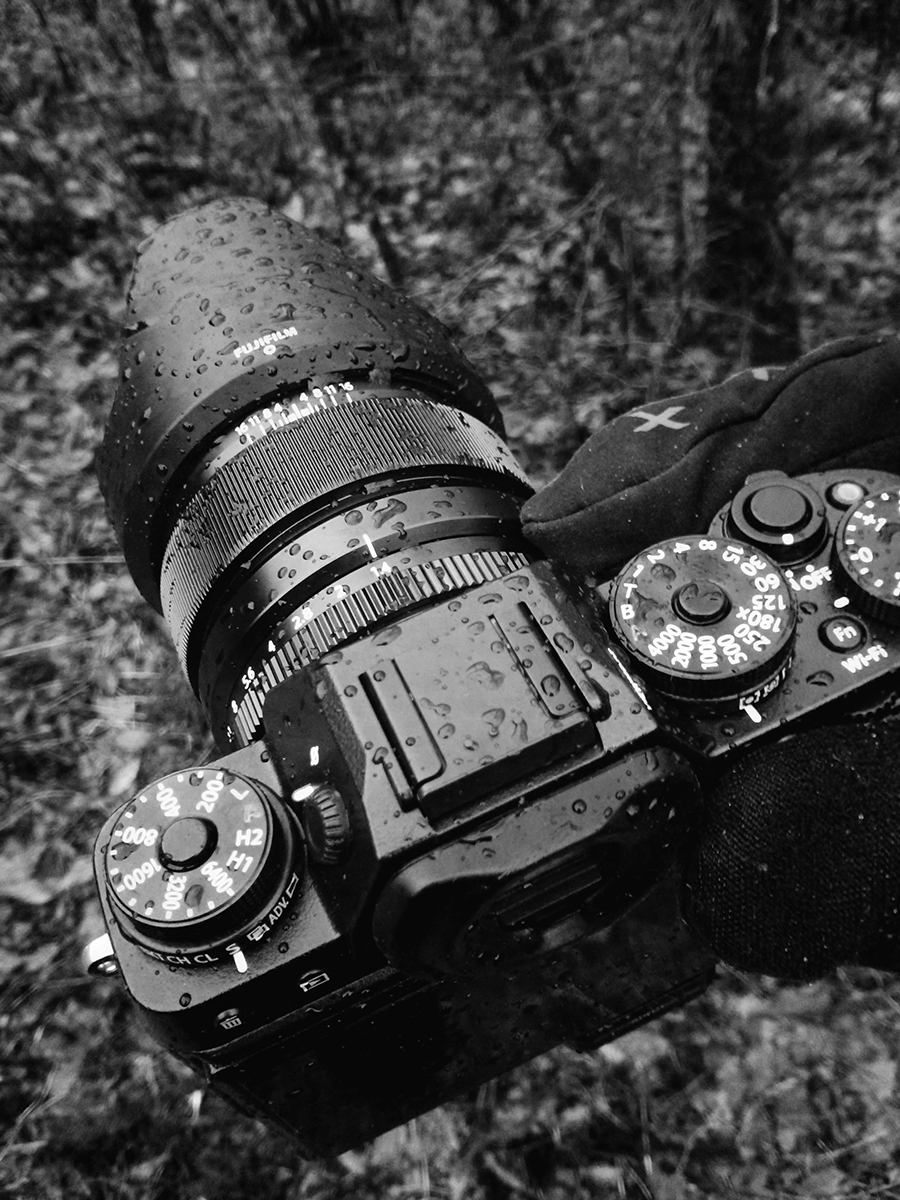
- The X-Series lens lineup is excellent. One of the hesitations any photographer would have with switching to a new system like the Fuji X-Series is the availability of high quality lenses. Luckily, every lens in Fuji’s system is awesome. There are a number of useful walk around zooms and every single one of their prime lenses is fast and sharp. Even the 18-55mm zoom lens that comes in the kit is a premium lens with a fast 2.8 aperture at the wide end and a nearly all metal construction. Compare that to the kit lens that comes with the Canon EOS 6D (24-105mm f/4L) and the Fuji is actually a full stop faster at the wide end and less than half the size and weight. The advantages of a smaller mirrorless system are exemplified by the Fujifilm line up when you get to see the weight and space savings you get with lenses that rival the bigger DLSRs. Furthermore, this is done at a very reasonable price point, especially when comparing with options from Canon and Nikon. All these excellent traits make the X-Series a serious option for professional photographers who travel. I’m actually doing just that with a 3 month journey through Europe with the X-T1 as my primary body. My travel kit consists of the following:
- Fujifilm X-T1
- Fujifilm XF 14mm f/2.8 R – Wide angle for landscape shots; I can’t wait to try this for astrophotography.
- Fujifilm XF 23mm f/1.4 R – Probably my favorite lens of all time; it’s got the best combination of bokeh, wide angle and speed.
- Fujifilm XF 35mm f/1.4 R – The classic standard lens for the Fuji lineup. Not too wide, nor too narrow and super fast.
- Sirui T-025X Carbon Fiber Tripod – This thing is amazingly light and compact. It’s only 1.5 pounds (0.7kg) making it a perfect match for a travel shooter that still wants a full size tripod.
- I would love to try the new Fujifilm XF 56mm f/1.2 R when it becomes more widely available. Everything I’ve read about it seems to indicate that that it’s the lens everyone has been waiting for to complete the Fuji X-Series lineup. I imagine that it will make its way into my bag sometime in the near future to round off my setup.
Sample Images
As of the release of the X-T1, Adobe has not yet released a version of Lightroom that supports conversion of the X-T1’s RAW files so I’ve been playing around with JPEGs from the black and white film simulation mode built into the X-T1. Shooting in RAW + JPEG allows photographers to see instant JPEG results in the selected film simulation mode and then can subsequently re-convert those RAW files into additional JPEGs with any of the desired film simulation modes. This means that even if you shoot all your photos in a particular film mode, you have the option to go back and choose any of the other film simulation modes. I am particularly fond of the various black and white film simulations modes and the weather I’ve had available to me has been particularly dark and grey which has been great for monochrome images.
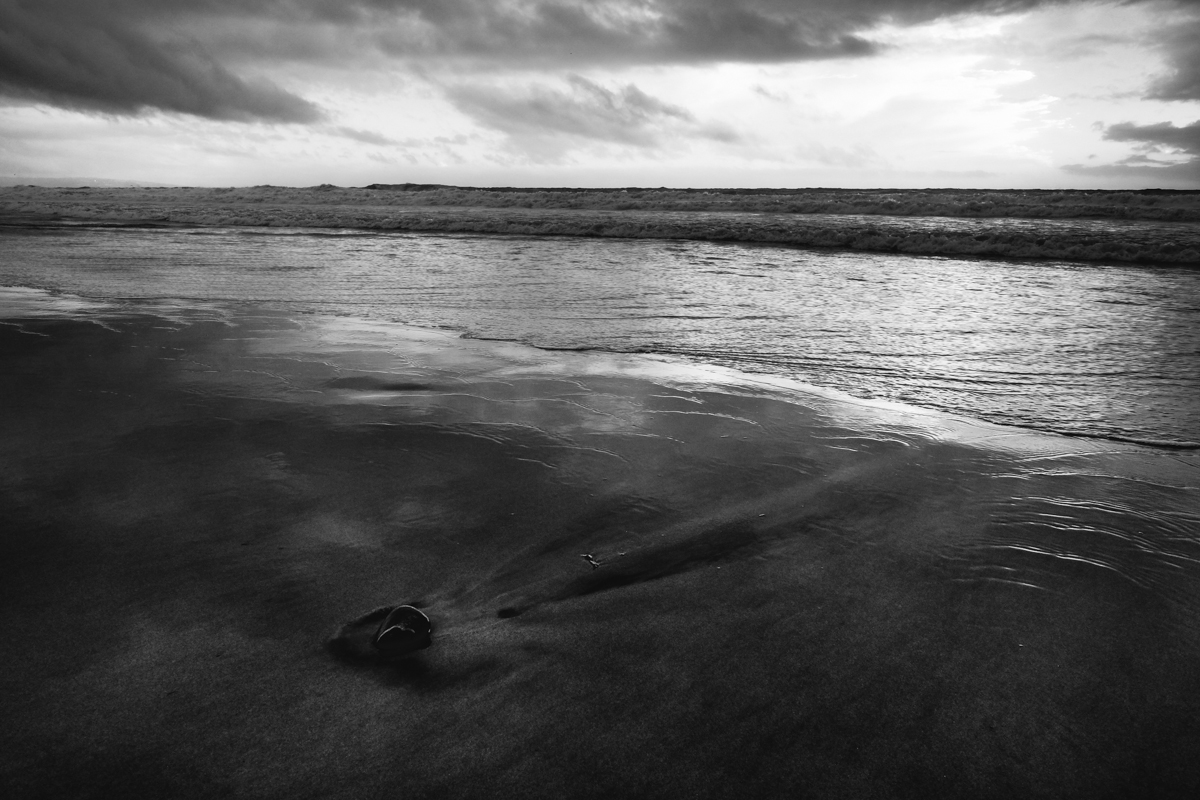
Santa Monica had some unusually dark and rainy weather for the image above. The photo was taken with the red filtered black and white simulation mode which darkened the blue hues of the late day storm. This photo was taken with manual focus using the the 14mm hyperfocal distance scale which makes it really easy to maximize depth of field for shots that don’t require careful focusing.
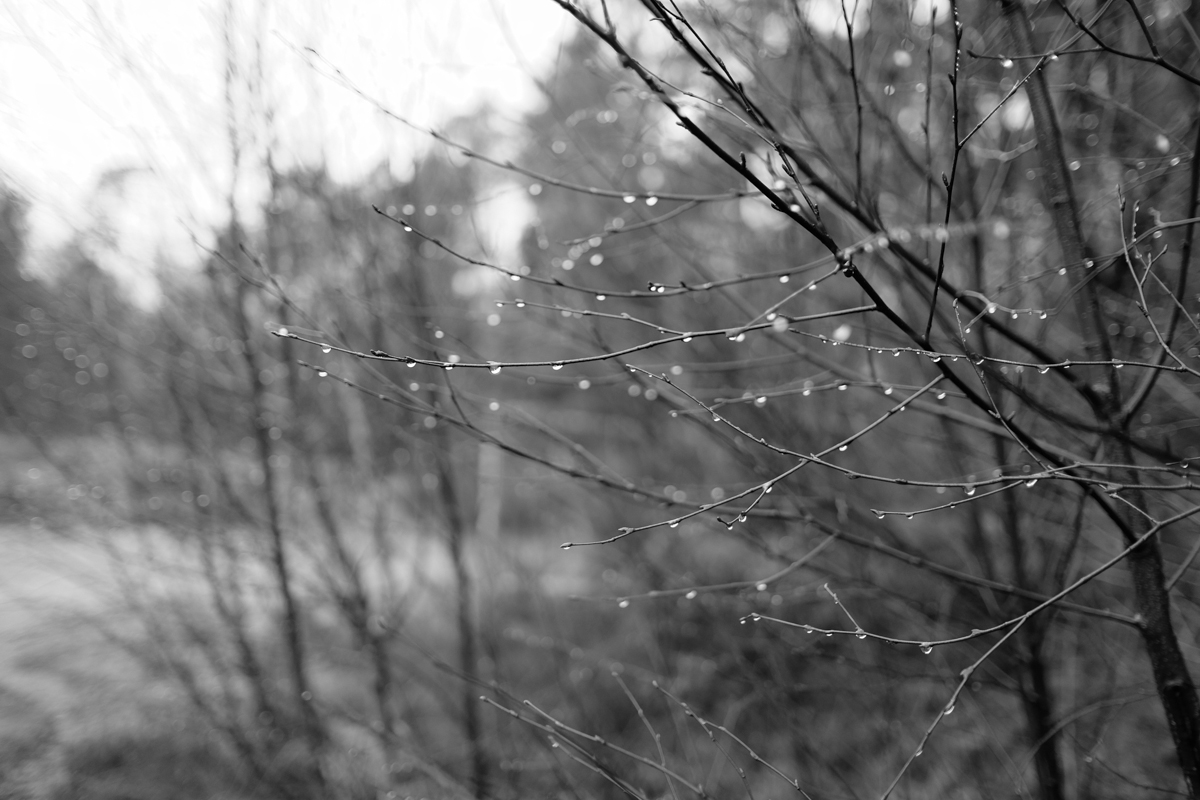
Above is from my first outing in the rain in Stord, Norway with the X-T1. The XF 23mm f/1.4 does a great job with selective focusing for such a wide angle lens. I think the bokeh quality is top notch, especially for a lens this short. A detailed review of the XF 23mm f/1.4 is definitely coming soon.
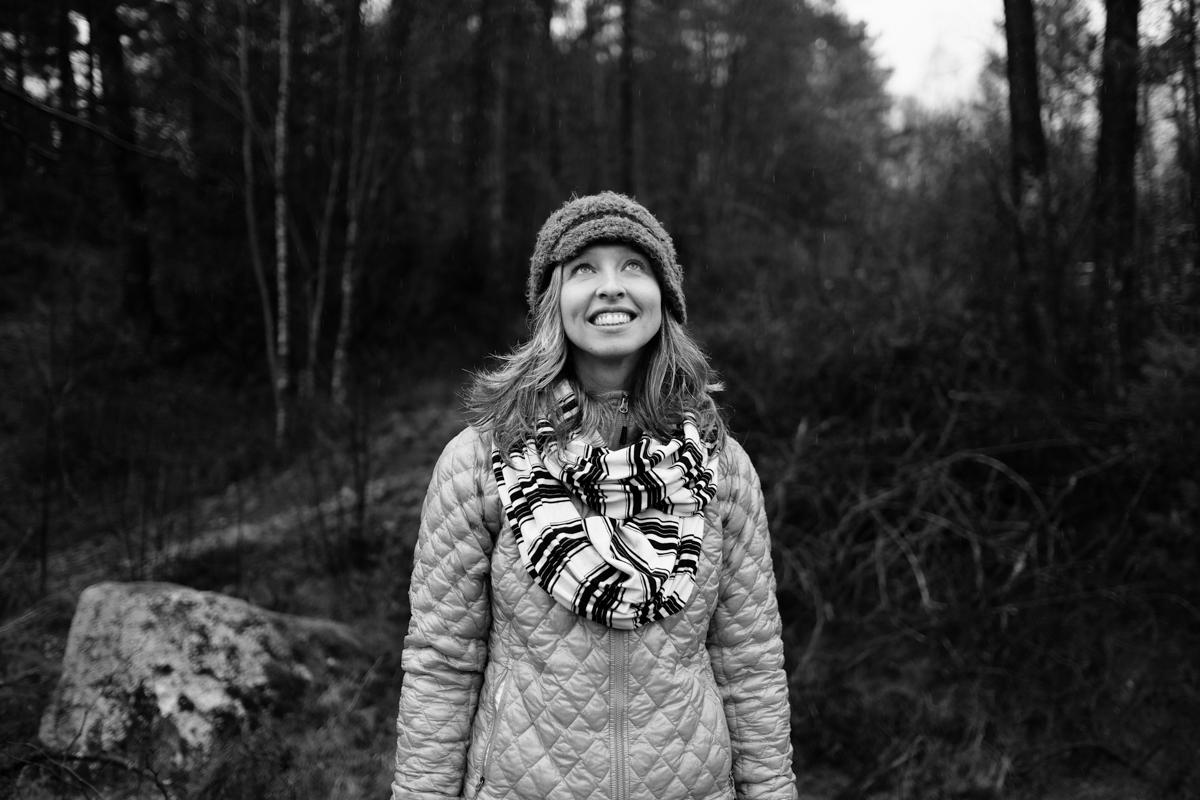
The green filtered black and white mode is particularly great for portraits, especially when combined with an overcast day. This is Diana on our walk in Stord, Norway. The brown earthy colors of the forest made for a great backdrop, particularly with the green filter black and white conversion.
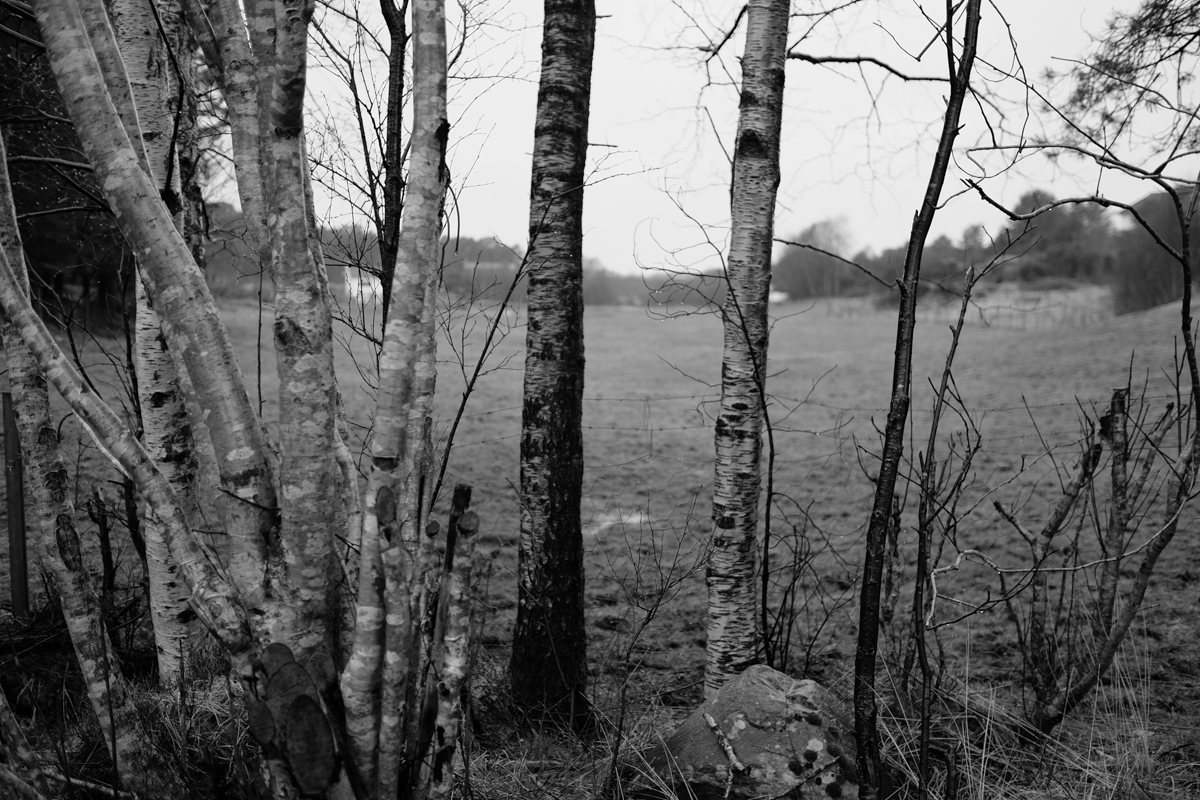
Rainy weather really saturates greens and reds and so a green filter makes creates some nice contrast in otherwise low contrast situations. These trees fenced in a large grassy field just behind the house we are staying at on the island of Stord, Norway. It going to be a bit rainy for the next few days so I won’t be able to present any astrophoto results right away but they will certainly come in a future post.

This image of the marina in Leirvik, Norway is a 4 minute exposure using the Bulb (B) function and an intervalometer. The XF 14mm f/2.8 lens has a 7 bladed aperture which makes for some awesome 14 pointed highlight stars when stopped down. Great for night time shots in town.
More Sample Images
Below are more sample images from the X-T1 that I’ve appended to the original review above.




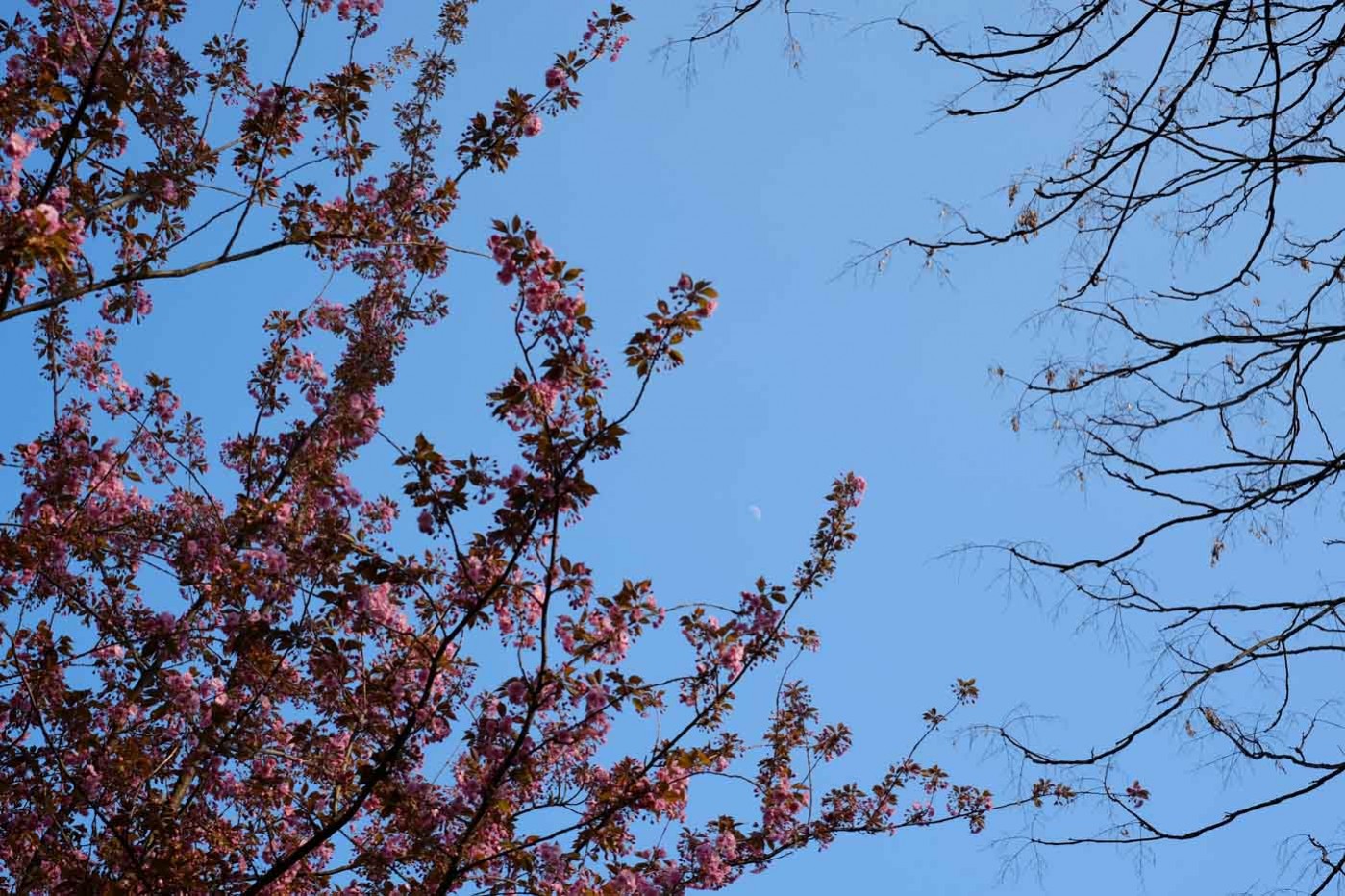
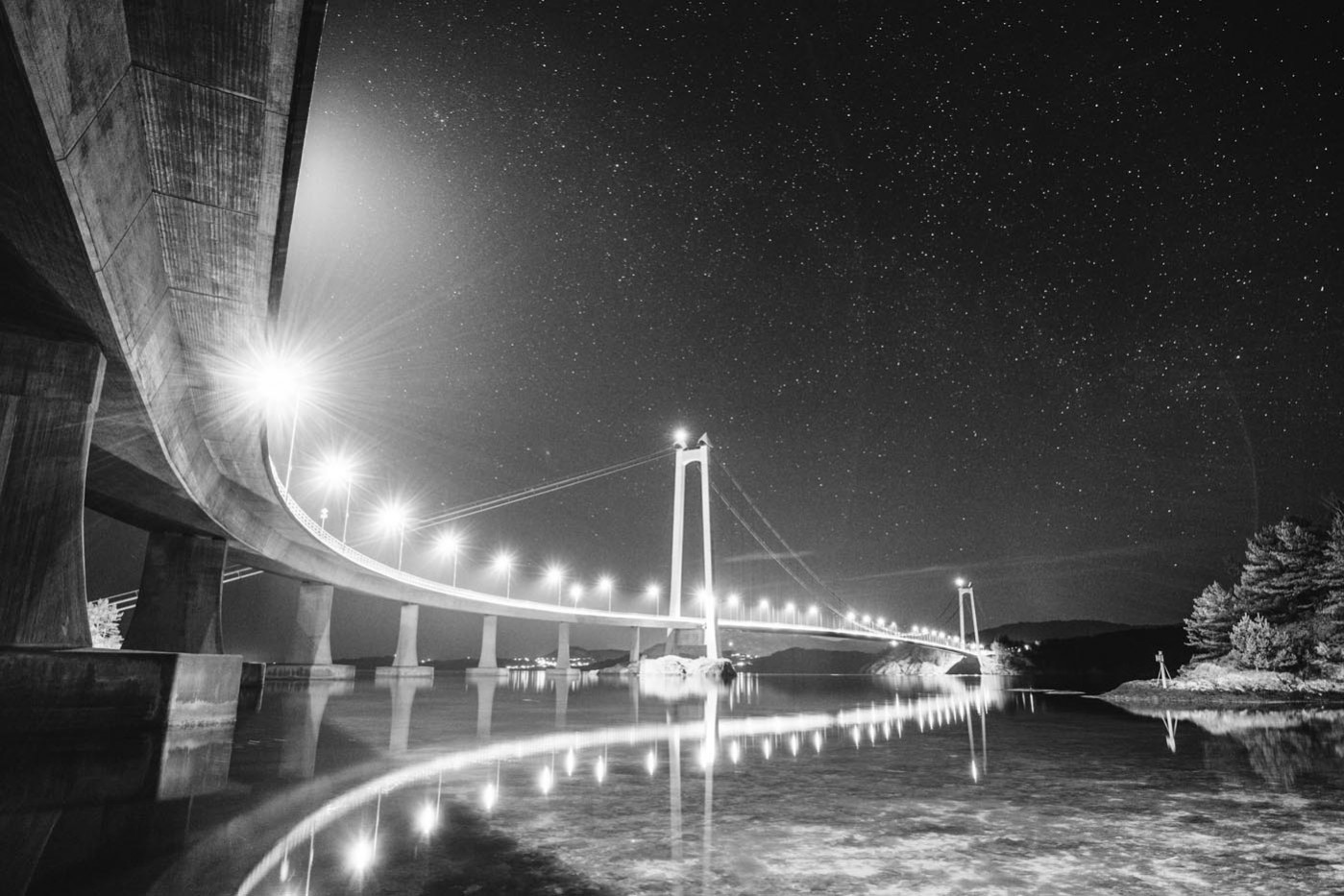




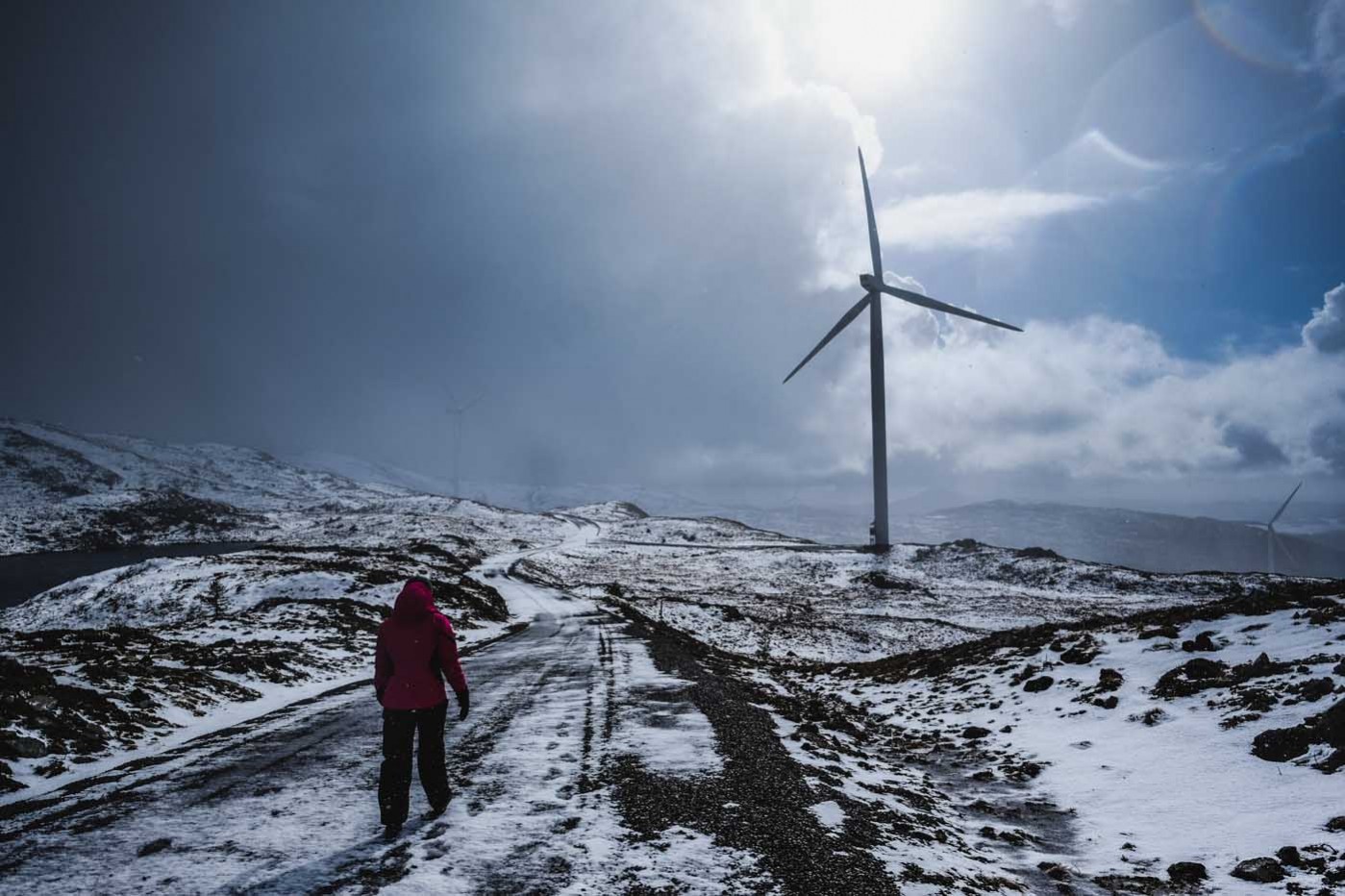

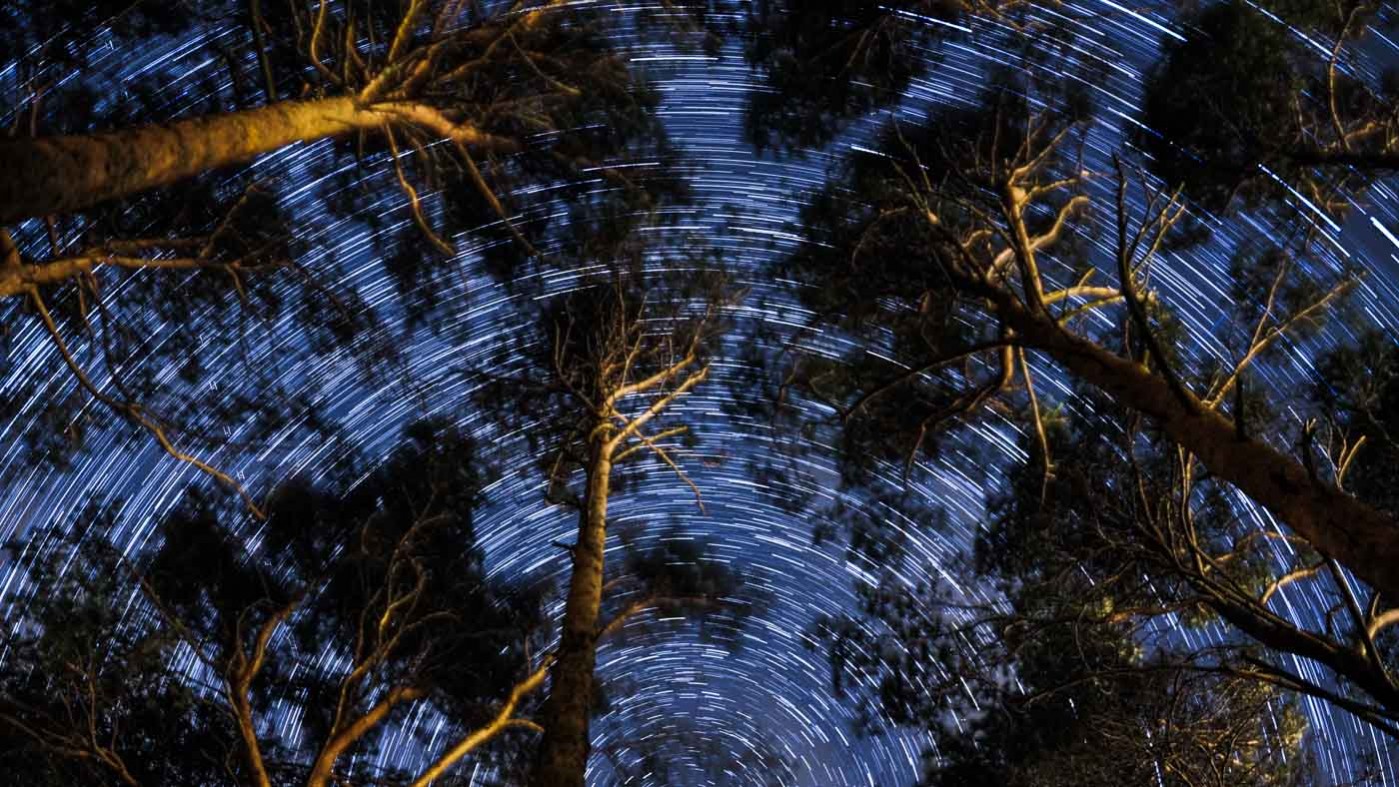


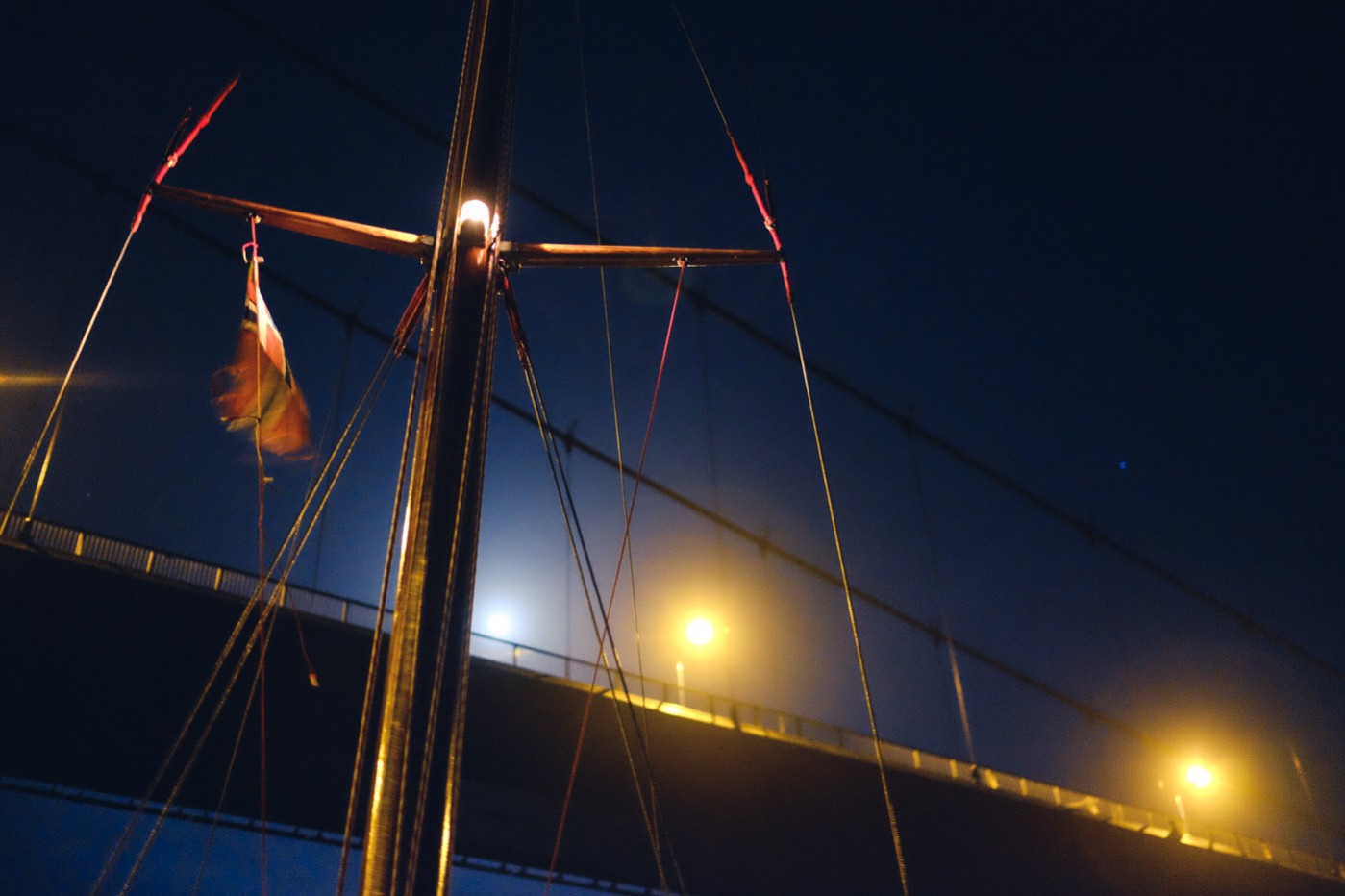





Conclusions
The Fujifilm X-T1 is the most well rounded X-Series camera so far. Finally, a mirrorless camera is well polished enough that I have no hesitation replacing my entire full-frame Canon set up with the X-T1 and a small collection of fast XF primes.
It’s EVF is finally good enough for serious work in nearly any condition; it has a view larger than my Canon EOS 6D. Invisible improvements like weather-sealing and improved build quality add a lot of value to a relatively affordable camera body. Shooting speed is extremely fast and AF accuracy and speed is top notch. It handles faster than the EOS 6D and small improvements like the tilting LCD and built in intervalometer make it more enjoyable to shoot, especially for astrophotography.
After all my scrutinizing of the X-T1, it hasn’t failed to treat me to some excellent surprises like a truly useful wi-fi remote control (better than the EOS 6D) and the ability to quickly re-assign custom functions to 6 different function buttons. The X-T1 is a brilliant camera for still photographers. Video enthusiasts will find more value in other options as the X-T1 only offers limited control over video capture. If you’re looking to shoot primarily video, look elsewhere.
It has a few small quirks like not being able to shoot in continuous mode at ISO 51200, limited video control, and an ISO dial that locks on every setting but overall, these are relatively minor blemishes on an otherwise brilliantly good camera. Fujifilm has built at great reputation amongst Fuji X-Series owners, not just because they’ve been releasing some great quality hardware, but also because their support and commitment to improving those products is top notch. Fuji camera firmware upgrades have become more than just bug fixes, they often make improvements that directly reflect the desires of the Fuji-X community and even on camera models that have been discontinued. For the X-T1, while it has no serious shortcomings, I wouldn’t be surprised if Fujifilm actually issues some firmware improvements to the X-T1.
Fujifilm is the only camera manufacturer offering something truly new and attractive for photographers. The styling of the X-Series cameras is more than just a look, it’s an excellent control scheme that makes for a shooting experience unlike that offered by any other cameras on the market. The image quality from these small cameras is top-notch and the X-T1 is no different. The lens offerings are fast enough to push image quality to the level of most full-frame cameras and in a much smaller package. While the X-T1 offers only small and incremental improvements over the previous X-Series cameras, all of these improvements as a whole make it the first mirrorless camera that has me willing to part with my DSLR.
Links:
![]()
Disclosure
We are a participant in the Amazon Services LLC Associates Program, an affiliate advertising program designed to provide a means for us to earn fees by linking to Amazon.com and affiliated sites. We are also a participant in the B&H Affiliate Program which also allows us to earn fees by linking to bhphotovideo.com.
Learn Astrophotography
Astrophotography 101 is completely free for everyone. All of the lessons are available on the Lonely Speck Astrophotography 101 page for you to access at any time. Enter your email and whenever we post a new lesson you’ll receive it in your inbox. We won’t spam you and your email will stay secure. Furthermore, updates will be sent out only periodically, usually less than once per week.
Help us help you!
Believe it or not, Lonely Speck is my full-time job. It’s been an amazing experience for us to see a community develop around learning astrophotography and we’re so happy to be a small part of it. I have learned that amazing things happen when you ask for help so remember that we are always here for you. If you have any questions about photography or just want to share a story, contact us! If you find the articles here helpful, consider helping us out with a donation.
[button font_size=”16″ color=”#136e9f” text_color=”#ffffff” url=”https://www.paypal.com/cgi-bin/webscr?cmd=_donations&business=lonelyspeckblog%40gmail.com&item_name=These+tips+help+keep+lonelyspeck.com+running.¤cy_code=USD&source=url” target=”_blank”]Donate[/button]
Thanks so much for being a part of our astrophotography adventure.
-Ian

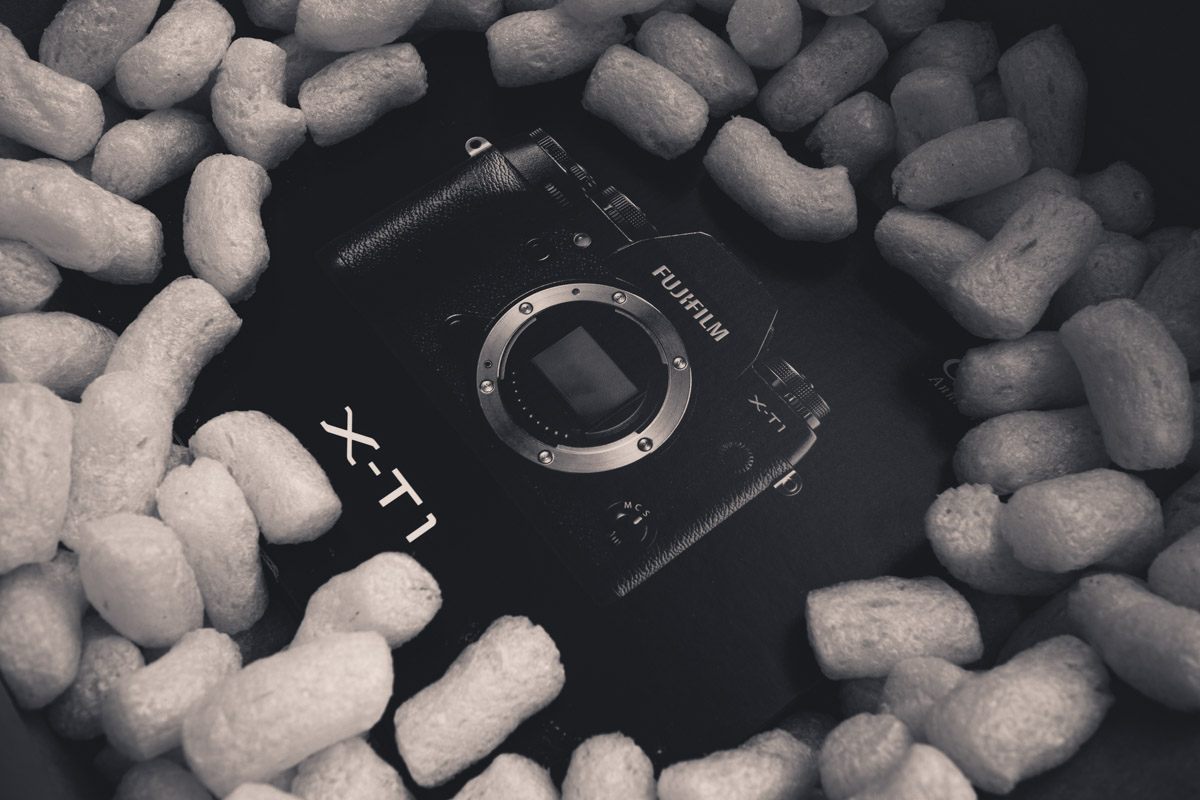
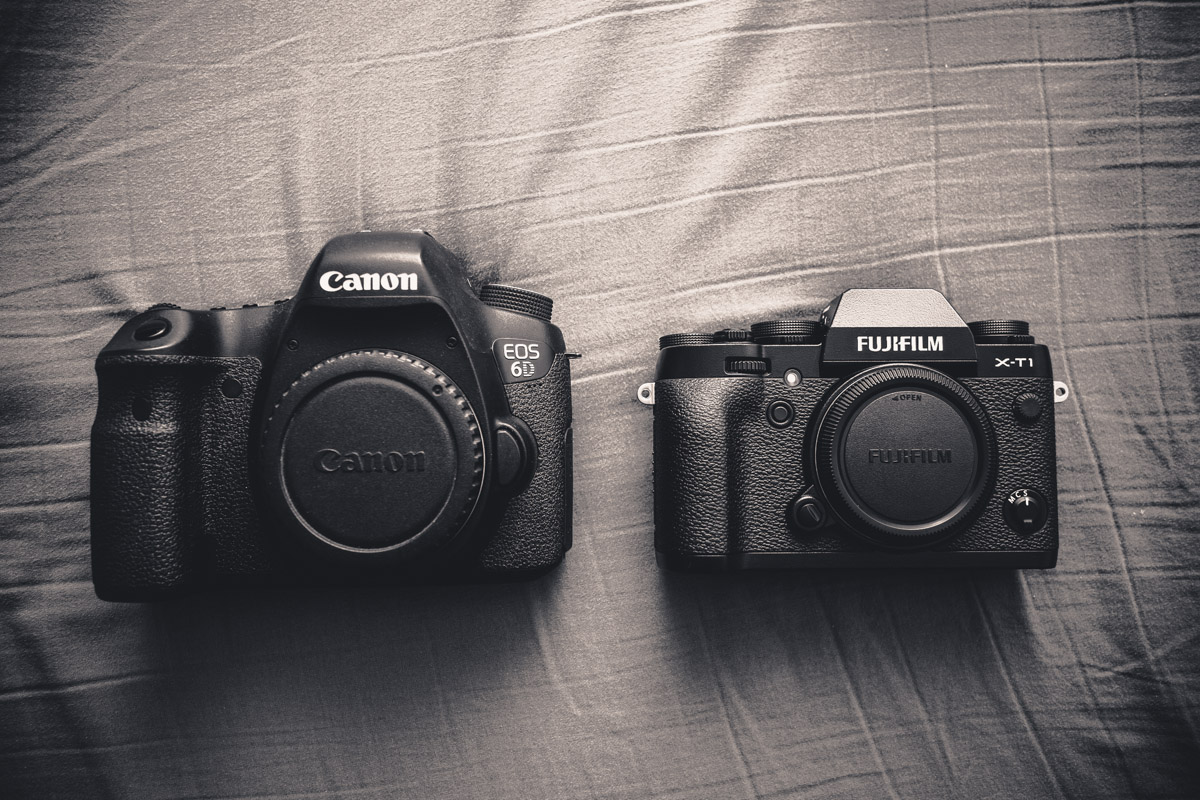
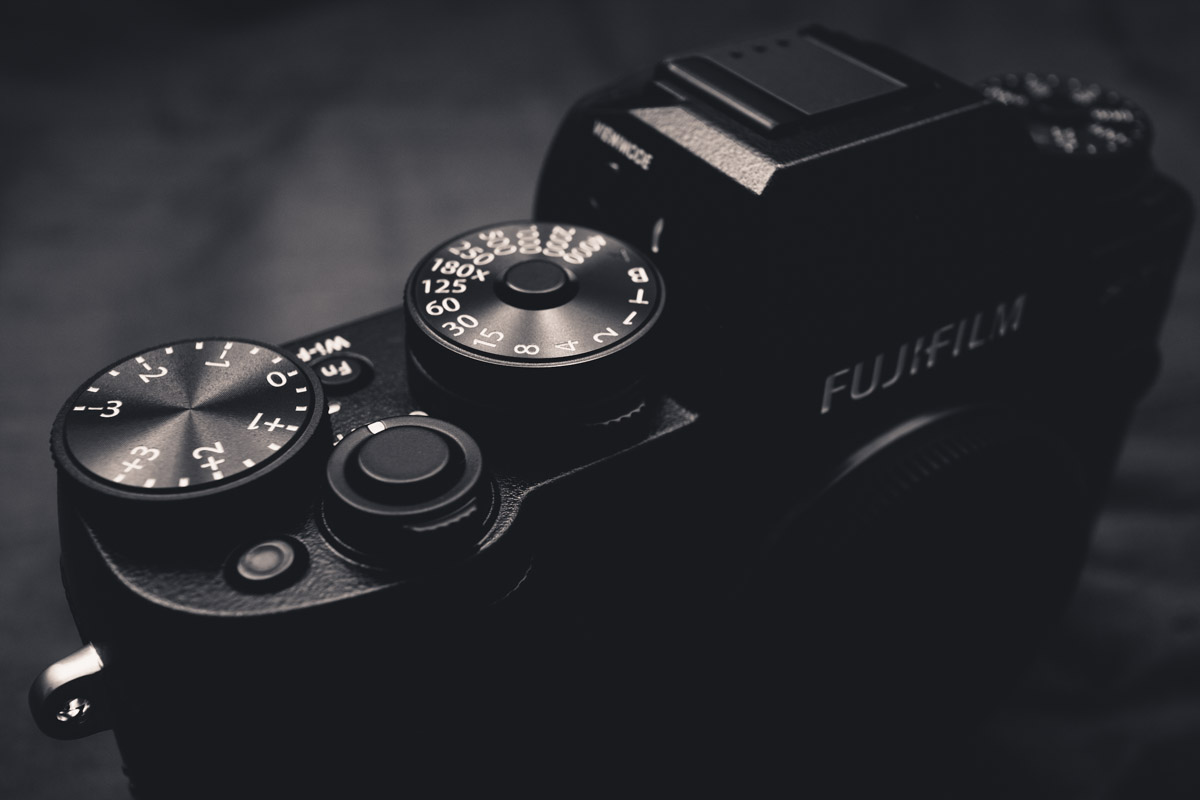
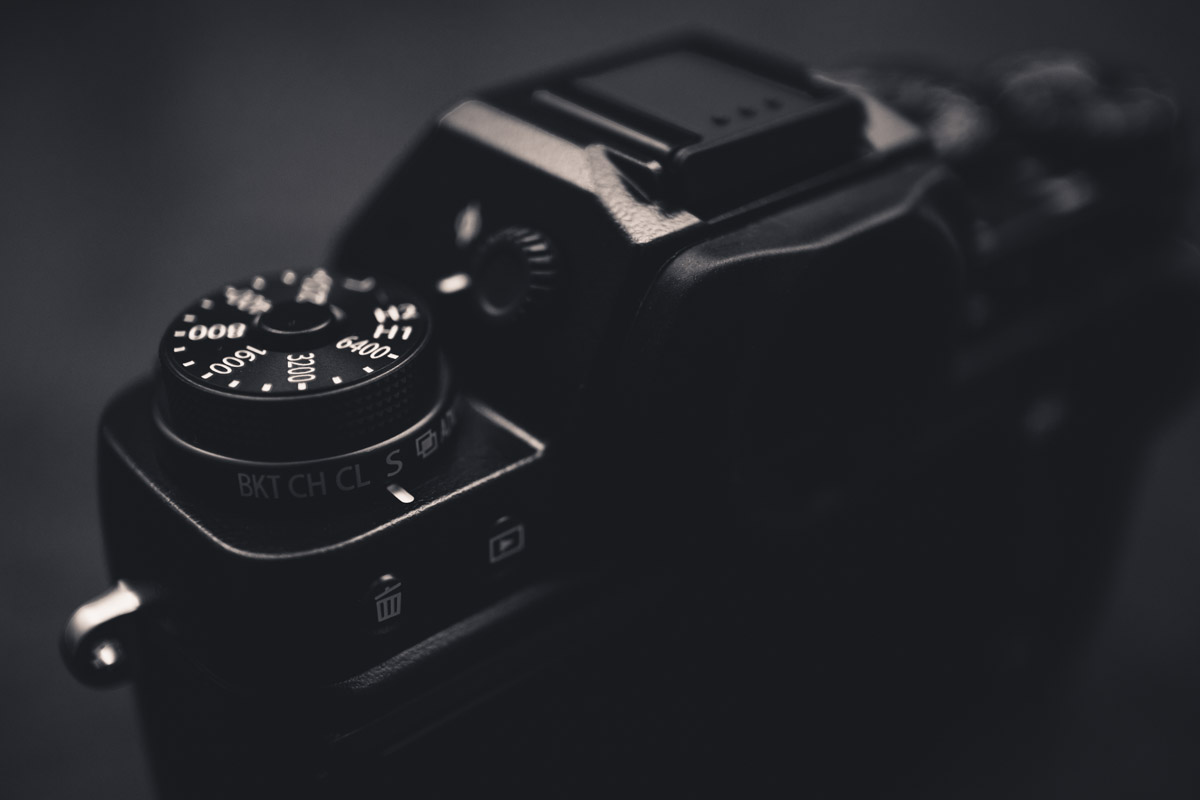

Excellent review! Very helpfull! almost convinced me to buy . .. I wanted to 6D / 5D mk3 🙂 Any change to the 40D it will be a pleasure ; )
Ian, I forgot to mention in my previous post, that the tripod I find quite handy for travel is the MeFOTO A2350 GlobeTrotter, because not only is it relatively light and compact, the big advantage is that it can convert to a monopod! One of the legs unscrews and then screws into the removable threaded center post, to become a full-size monopod, when a tripod is impractical. Quite a solid and ingenious design for the traveling photographer! I believe they also make a carbon fiber model, which is a bit more expensive than the aluminum model. Also, since the leg sections can be disassembled and cleaned, they make for good tripods in wet or sandy environments. Thank you.
Excellent review, Ian, and I agree with your conclusion! For your readers considering this excellent system, I wanted to mention the following additional advantage of a mirrorless system like the Fujifilm X-System…I was a Nikon and Pentax guy before realizing the major advantage of mirrorless, (for me, at least), is that the image is focused directly off the sensor, thereby eliminating the front/back focus issues I sometimes used to find in my DSLR days. (Even with the option to micro-adjust AF in-camera for each lens, I just didn’t trust my old eyes to be able to acquire optimum focus, hence my move to the superb Fuji X-System. I find that each of my Fujinon lenses (even the 16-55 f/2.8 XF WR Zoom is tack sharp, with minimal post sharpening required!). Thanks again for this excellent review!
Can you be so kind to show me a picture which wasn’t possible with the Canon 6D, but is with the Fuji X-T1?
Any of these images would be possible on a 6D.
i sold off my Nikon D610 for a fuji xt-1… it was a great decision! this camera delivers fanastic image quality, has superb lense system and is light! it just gets out of the way and doesnt hinder creativity. this is the future. Leave DSLRs for studio work… for everyday use, a lightweight ML camera really makes a big difference. now my camera is with me far more often. you dont get better at photography by leaving your camera home or in a bag!